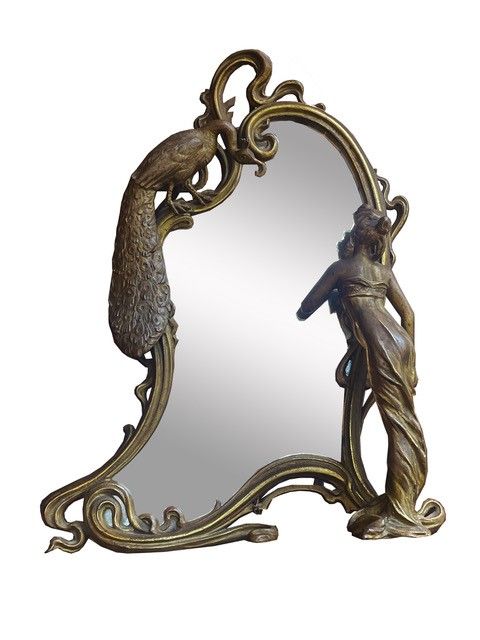Art Nouveau

Art Nouveau, a decorative arts movement that flourished from the late 19th century until the early 20th century (approximately 1890-1910), is characterized by its organic, flowing lines and its inspiration from nature. The term “Art Nouveau” is French for “new art,” and the movement sought to break away from traditional artistic conventions and create a new aesthetic that harmonized the decorative arts with fine arts.
Key Characteristics
- Organic Forms and Natural Motifs: Art Nouveau artists and designers often used floral and plant motifs, as well as forms inspired by natural elements like insects, animals, and sea life. Curving, sinuous lines, known as “whiplash” lines, are a hallmark of the style.
- Integration of Arts: The movement aimed to dissolve the boundaries between fine arts (painting, sculpture) and applied arts (furniture, jewelry, glassware), creating a cohesive and holistic artistic expression.
- Innovative Materials and Techniques: Art Nouveau practitioners experimented with new materials such as iron, glass, and ceramics, and they utilized innovative techniques to create intricate patterns and designs.
- Architecture and Interior Design: Art Nouveau had a significant impact on architecture and interior design. Buildings often featured ornate facades, intricate ironwork, and elaborate interior details. Notable architects include Antoni Gaudí in Spain and Victor Horta in Belgium.
Notable Figures
- Hector Guimard: Known for designing the iconic Paris Métro entrances.
- Antoni Gaudí: Famous for his unique and organic architectural designs, including the Sagrada Família in Barcelona.
- Gustav Klimt: An Austrian painter whose works often incorporated gold leaf and elaborate patterns.
- René Lalique: A renowned glass designer and jeweler known for his innovative and elegant Art Nouveau pieces.
Influence and Legacy
Art Nouveau was an international movement, known by different names in various countries: Jugendstil in Germany, Sezessionstil in Austria, Modernisme in Spain, and Stile Liberty in Italy. Despite its relatively short-lived prominence, Art Nouveau had a lasting impact on the development of modern art and design. It paved the way for future artistic movements such as Art Deco and influenced contemporary approaches to integrating form and function in design.
Decline
The decline of Art Nouveau began around 1910, as the style became overshadowed by the emergence of Art Deco and other modernist movements. However, its emphasis on craftsmanship and the unification of art and design continues to inspire artists and designers today.
Art Nouveau remains celebrated for its beauty, creativity, and its contribution to the evolution of art and design, representing a vibrant and transformative period in the history of visual culture.
RSA Antiquitäten Wiesbaden is your antiques dealer in the Rhine-Main area: a large selection of original Art Deco, Biedermeier and Baroque furniture: high quality and exclusive. At RSA Antiquitäten Wiesbaden you can expect a large selection of expertly restored antiques, exhibits from the Louis Seize, Biedermeier and Art Deco periods.
The following artist glossary: Emile Gallé

-
RSA Antiquitäten Wiesbaden
-
Taunusstraße 34
65183 Wiesbaden -
+49 611 5 29 05 70
-
+49 170 7 83 01 13
-
info@antiquitaeten-wiesbaden.de
-
Mondayclosed
-
Tuesday - Friday12 a.m. - 6 p.m.
-
Saturday10 a.m. - 4 p.m.